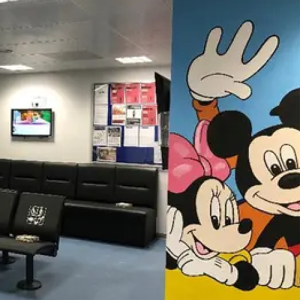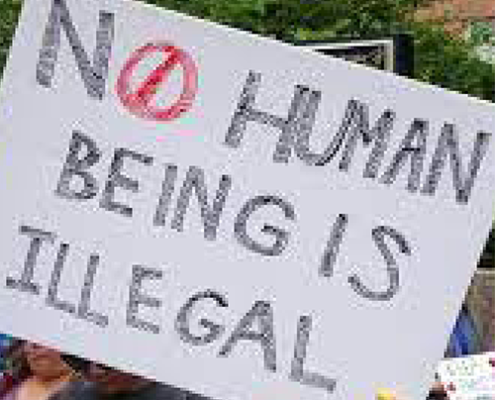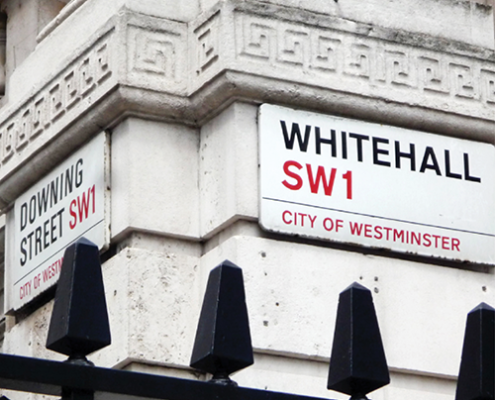Unmasking the Injustice | Removing Cartoon Murals Amplifies the Suffering of Child Refugees
Oh, Minister of Immigration, tell us why,
Did you silence their laughter, make angels cry?
Did you not see their longing, their innocent plea,
To hold onto childhood, to simply be free?Oh, the power of art, so profound,
To heal wounds, to turn darkness around,
But you took that away, a heartless decree,
Forgetting the power of hope, of empathy.
Anon
The decision of Robert Jenrick, Minister for Immigration, when he ordered the removal of murals featuring popular cartoon characters from the walls of child refugee detention centres has sparked a wave of controversy.
Introduction:
The recent decision by Conservative MP Robert Jenrick, the United Kingdom Minister for Immigration, to order the removal of murals featuring popular cartoon characters from the walls of child refugee detention centres has sparked a wave of controversy.
This article aims to shed light on the inherent cruelty of such a decision, highlighting its detrimental impact on the already vulnerable lives of these young individuals seeking safety and protection.
Loss of Comfort and Normalcy:
Child refugee detention centres are meant to provide a safe and welcoming environment for children who have fled conflict and persecution.
The colourful and familiar cartoon murals offer comfort, familiarity, and normalcy in a distressing situation. Removing these murals robs these children of an essential source of solace and familiarity, further eroding their emotional well-being.
Trauma and Isolation:
Many child refugees have experienced unimaginable trauma, witnessing violence and losing loved ones. The process of seeking asylum can exacerbate their distress, leaving them feeling isolated and uncertain about their future.
The cartoon murals provide a much-needed distraction and serve as a common ground for children from different cultures and backgrounds to connect and communicate. By removing these murals, authorities strip away a valuable tool for fostering a sense of belonging and reducing these children’s isolation.
Demeaning and Dehumanizing:
The decision to paint over the cartoon murals sends a distressing message to these young refugees. It suggests that their presence is merely a burden and that their emotional needs and well-being are unimportant.
By denying them the right to enjoy something as innocent as cartoon characters, the authorities contribute to a dehumanizing atmosphere that compounds the trauma already experienced by these children.
Importance of Art Therapy:
Art therapy has been proven to have significant therapeutic benefits, especially for individuals who have experienced trauma.
The cartoon murals provide a form of expression and release for the children residing in these centres, allowing them to process their emotions and experiences nonverbally.
Removing these murals denies them an essential outlet for healing and self-expression, hindering their recovery and overall well-being.
Public Perception and Accountability:
The decision to paint over the cartoon murals raises questions about the government’s commitment to the welfare of child refugees. It signals to the public that these children’s needs are not a priority, potentially perpetuating negative stereotypes and fueling public indifference towards their plight. Furthermore, it undermines the government’s accountability in providing a compassionate and supportive environment for those seeking refuge.
From a Theological Perspective:
From the perspective of Christian metaphysics, the response to the decision to remove cartoon murals from child refugee detention centres can be guided by the principles of love, compassion, and the inherent worth of every human being.
Here are a few considerations:
Imago Dei – The Image of God:
Christian metaphysics affirms the belief that every human being is created in the image of God (Imago Dei).
This perspective emphasizes every individual’s intrinsic dignity and value, regardless of their circumstances. As Christians, we are called to recognize the divine spark within each person, including child refugees.
Removing the murals without considering their impact on their well-being goes against recognising their inherent worth.
Compassion and Justice:
Christian teachings encourage believers to show compassion and seek justice, particularly for the marginalized and vulnerable.
Child refugees, having fled from difficult and often traumatic situations, are among the most vulnerable members of society.
As such, our response should prioritize their well-being, advocating for compassionate and just treatment. Removing the murals, which provide comfort and a sense of normalcy, goes against these principles of compassion and justice.
The Ministry of Presence:
Christian metaphysics recognizes the importance of being present with those who are suffering or marginalized.
The cartoon murals provide comfort and connection, providing a glimpse of normalcy in a challenging environment. By ordering their removal, the government risks depriving these children of an essential source of solace and joy.
As Christians, we can support the ministry of presence by advocating for preserving these murals and supporting child refugees in various ways.
Love and Hospitality:
Christian teachings emphasize the call to love one’s neighbour and extend hospitality to strangers. This includes welcoming and caring for those seeking refuge.
Removing the murals may inadvertently communicate a lack of love and hospitality towards these vulnerable children.
As Christians, we can strive to promote an environment of acceptance, warmth, and care, recognizing the importance of creating spaces that foster healing and restoration.
Conclusion:
In ordering the removal of cartoon murals from child refugee detention centres, Robert Jenrick’s decision displays a lack of empathy and understanding for the emotional needs of vulnerable children.
Denying them the simple joy and comfort provided by these murals only serves to compound their trauma and isolation.
Policymakers must recognize the detrimental effects of such decisions and prioritize the well-being and rights of child refugees above all else.
From the perspective of Christian metaphysics, the response to the decision to remove cartoon murals from child refugee detention centres should prioritize the recognition of each person’s inherent worth, the principles of compassion and justice, the ministry of presence, and the embodiment of love and hospitality.
By upholding these values, Christians can advocate for the well-being and dignity of child refugees, fostering an environment that reflects God’s love and compassion.
Citations:
Kinnock, S. (2023). Robert Jenrick has cartoon murals painted over at children’s asylum centre. The Guardian. Retrieved 14 July 2023, from https://www.theguardian.com/uk-news/2023/jul/07/robert-jenrick-has-cartoon-murals-painted-over-at-childrens-asylum-centre
Here are some other posts folks have read:
About Rev Lloyd Hobbard-Mitchell
Rev. Lloyd Hobbard-Mitchell, an Englishman deeply connected to Thailand, was ordained to the Sacred Priesthood on 28th May 2023.
In addition to his religious journey, he has worked as an online English teacher and pursued a career as an artist. He has also operated a tour desk business with his wife within international brand hotels.
Lloyd has extensive experience in the voluntary sector, specifically in addressing homelessness and social welfare.
He is a Fellow of the Royal Geographical Society and embraces opportunities to meet new people, see new places, explore cultural similarities, and celebrate differences.






